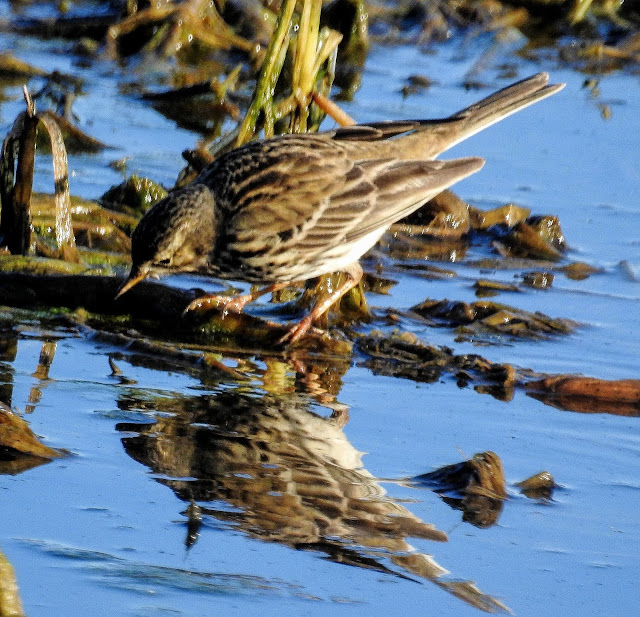
Vanessa atalanta, the red admiral or, previously, the red admirable, is a well-characterized, medium-sized butterfly with black wings, red bands, and white spots. It has a wingspan of about 2 inches (5 cm). It was first described by Carl Linnaeus in his 1758 10th edition of Systema Naturae. The red admiral is widely distributed across temperate regions of North Africa, the Americas, Europe, Asia, and the Caribbean. It resides in warmer areas, but migrates north in spring and sometimes again in autumn. Typically found in moist woodlands, the red admiral caterpillar's primary host plant is the stinging nettle (Urtica dioica); it can also be found on the false nettle (Boehmeria cylindrica). The adult butterfly drinks from flowering plants like Buddleia and overripe fruit. Red admirals are territorial; females will only mate with males that hold territory. Males with superior flight abilities are more likely to successfully court females. It is known as an unusually calm butterfly, often allowing observation at a very close distance before flying away, also landing on and using humans as perches.
In Culture
The red admiral features in several works of Vladimir Nabokov: Speak, Memory (1951), Pale Fire (1962), and King, Queen, Knave (1968).

The forewing of this butterfly bears on a black ground an oblique vermilion bandand a group of white subapical spots. On the hindwing the larger portion of the distal margin is red, with a row of small black spots and at the anal angle an elongate blue spot. The underside is partly variegated with blue; the forewing is on the whole similar in markings to the upper, while the hindwing is brightly variegated and clouded, bearing black markings, of which those in the cell resemble a figure (on the left wing 18 or 98, on the right 81 or 89); in the middle of the costal area there is a pale patch and in the distal marginal area a row of ocellus-like spots. Sometimes, especially in the female, the red band of the forewing bearsa small white spot in the middle.
The red admiral is found in temperate regions of North Africa, North and Central America, Europe, Asia, and island regions of Hawaii, and the Caribbean.
In northern Europe, it is one of the last butterflies to be seen before winter sets in, often feeding on the flowers of ivy on sunny days. The red admiral is also known to hibernate, re-emerging individuals showing prominently darker colors than the first brood. The butterfly also flies on sunny winter days, especially in southern Europe.
In North America, the red admiral generally has two broods from March through October. Most of North America must be recolonized each spring by southern migrants, but the species overwinters in south Texas.

Male red admirals are territorial and perch during the afternoon until sunset. Larger territories are optimal and subject to intrusion by other males more frequently than smaller territories. Territories tend to be oval, 8–24 feet (2.4–7.3 m) long and 13–42 feet (4.0–12.8 m) wide. Males patrol their territory by flying around the perimeter between 7 and 30 times per hour. On average, territory holders interact with intruders 10 to 15 times per hour.
When another male encroaches on a red admiral's territory, the resident chases away the intruder, often in a vertical, helical path to disorient or tire out the intruder while minimizing the horizontal distance it travels from its perch. The red admiral immediately returns to its territory after chasing off encroaching males. Time spent patrolling increases as number of the intruder interactions increases.
Patrolling behavior is correlated with warmer air temperatures, so males begin patrolling early and continue later on warmer days. Overcast skies usually led to patrolling later in the day. It is not clear whether this later start time is due to lower air temperature or a direct effect of decreased solar radiation. Another theory is that males believe it is earlier in the morning on cloudy days because of the reduced solar radiation.
Mating usually occurs in late autumn or early winter following collective migration to southern regions with a warmer climate. The red admiral's main host plant, stinging nettle, is most abundant during this migration. Larval development proceeds through winter and adults are first sighted in early spring. The new generation of adults migrates north before mating, because food is usually diminished by late spring. In Europe, the cyclic nature of this migration has been confirmed by analysing stable isotopes of wing samples. In spring, individuals arriving at northern Europe (Kaliningrad) were of a southern origin, while in autumn the isotope analyses revealed that samples came from the surrounding area or northern latitudes. During migration, the red admiral flies at high altitudes where high-speed winds carry the butterfly, reducing energy expenditure.
%2021.jpg)

































%2020.jpg)














